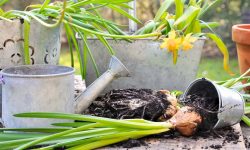Lupines are striking garden plants known for their vibrant, spiky flowers. Their tall, colorful blooms add drama and texture to any garden. Growing lupines from seeds allows gardeners to enjoy a wide variety of colors and cultivars. However, germinating lupin seeds can be challenging without proper techniques.
Successful germination depends on preparing seeds correctly, providing ideal conditions, and understanding their growth cycle. By learning expert tips, gardeners can improve germination rates and grow strong, healthy seedlings. This guide explains step by step how to germinate lupin seeds, care for young plants, and ensure stunning blooms. With patience and proper care, lupines can become a garden centerpiece.
Understanding Lupines

Lupines are perennial or annual flowering plants belonging to the legume family. They are admired for their tall, colorful spikes and unique palmate leaves. Native to North and South America, Europe, and Africa, lupines thrive in well-drained soil and sunny locations. Their adaptability allows them to grow in various garden settings, from borders to wildflower meadows.
Lupines also enrich the soil by fixing nitrogen through their root nodules. This natural process improves soil fertility and benefits neighboring plants. Gardeners often choose lupines for both their ornamental beauty and ecological value. The vibrant blooms range in color from purple and blue to pink, white, and yellow, making them ideal for creating visually striking garden displays.
Understanding lupin growth is essential for successful seed germination. Seeds have a hard coating that can slow or prevent sprouting if untreated. Preparing the seeds properly increases germination rates and ensures healthy seedlings. Additionally, knowing the plant’s preferred conditions, such as sunlight, soil pH, and spacing requirements, helps gardeners cultivate strong, flowering plants. Proper care from seed to mature plant guarantees vibrant, long-lasting blooms that enhance any garden.
Choosing the Right Lupin Variety
Selecting the right lupin variety is essential for achieving vibrant blooms and healthy plants. Lupines come in a wide range of colors, heights, and growth habits. Tall varieties are perfect for the back of borders or as focal points, while dwarf types work well in containers or at the front of flower beds. Choosing a variety suited to your garden space ensures proper growth and display.
In addition to height and color, consider the plant’s hardiness and flowering season. Perennial lupines return year after year and often produce larger, showier flower spikes, while annual varieties bloom quickly but do not survive winter. Understanding your climate and seasonal conditions helps determine which variety will thrive in your garden. Selecting disease-resistant cultivars also reduces the risk of problems such as aphid infestations or powdery mildew.
Gardeners should also consider seed availability and growth requirements. Some lupines prefer slightly acidic soil, while others tolerate a wider pH range. Matching the variety to soil type, sun exposure, and moisture levels is crucial for success. By carefully choosing the right lupin variety, gardeners set the stage for strong germination, robust growth, and long-lasting, colorful blooms. Proper selection at the start saves time and effort later, ensuring a garden filled with striking, healthy lupines that attract pollinators and enhance the landscape throughout the season.
Ideal Growing Conditions
Lupines thrive best in well-drained soil with moderate fertility. Heavy, waterlogged soils can lead to root rot, while overly rich soils may cause excessive leaf growth with fewer flowers. Adding organic matter such as compost improves soil structure, drainage, and nutrient content. Well-prepared soil provides a strong foundation for seed germination and healthy growth.
Sunlight is critical for vibrant blooms. Lupines prefer full sun, at least six hours per day, but some varieties tolerate partial shade. Adequate light ensures strong stems and abundant flowering. In hotter climates, light afternoon shade can prevent stress and prolong bloom longevity. Proper spacing between plants enhances airflow, reduces disease risk, and allows each plant to develop to its full potential.
Temperature and climate also affect lupin growth. Lupines generally prefer cooler, temperate climates and may struggle in extreme heat or humidity. Maintaining consistent moisture without waterlogging supports healthy roots. Understanding the plant’s preferred conditions, including sunlight, soil, and temperature, sets the stage for successful seed germination and robust development. Gardeners who meet these requirements enjoy taller flower spikes, more blooms, and longer-lasting color throughout the season.
Preparing Lupin Seeds for Germination
Lupin seeds have a hard outer coat that can slow or prevent germination. Scarification is an effective method to improve sprouting rates. Gently nick the seed coat with a file or sandpaper, taking care not to damage the inner seed. Alternatively, soaking seeds in warm water for 12 to 24 hours softens the coating and encourages moisture absorption, which speeds up germination.
After scarification or soaking, seeds should be planted promptly in a well-prepared seed tray or pot. Use a light, well-draining seed-starting mix to prevent waterlogging, which can cause rot. Sow seeds shallowly, covering them lightly with soil. Maintaining consistent moisture during this stage is crucial, as dry conditions can prevent germination entirely.
Temperature plays a significant role in germination success. Lupin seeds generally sprout best at 18–21°C (65–70°F). Placing seed trays in a warm, bright location ensures optimal conditions. Avoid direct sunlight that could overheat or dry out the soil. With proper preparation, including scarification, soaking, and careful planting, gardeners can achieve higher germination rates and produce strong, healthy seedlings ready for transplanting into the garden for vibrant blooms.
Sowing and Germination Process
Sowing Seeds Indoors
Starting lupin seeds indoors gives gardeners precise control over germination and early growth. After scarifying or soaking, plant the seeds in seed trays filled with a light, well-draining seed-starting mix. Sow each seed about one centimeter deep and cover it lightly with soil to allow air and moisture exchange. Maintaining consistent moisture is essential, as dry soil can prevent germination, while overwatering may cause seeds to rot or develop fungal issues.
Place trays in a bright location with indirect sunlight or use grow lights to provide steady illumination. Keep the temperature around 18–21°C (65–70°F) for optimal sprouting. Seeds typically emerge within one to three weeks. Once seedlings appear, thin weaker plants to ensure the strongest remain, giving each enough space for root and leaf development. Regular monitoring and gentle watering during this stage produce healthy, vigorous seedlings that are well-prepared for outdoor transplanting. By sowing indoors, gardeners can jumpstart the growing season and achieve higher success rates with lupin seedlings.
Direct Sowing Outdoors
Direct sowing lupin seeds outdoors is a convenient option, especially in areas with suitable climate conditions. Begin by preparing the garden soil, loosening it, and adding organic matter to ensure proper drainage. Plant seeds about one centimeter deep, either in rows for structure or scattered for a naturalized appearance. Lightly firm the soil over the seeds and water gently to avoid washing them away. Keeping the soil evenly moist is critical until seedlings emerge.
Outdoor germination is influenced by fluctuating temperatures, so sow seeds in early spring or late autumn when conditions are mild. Young seedlings are vulnerable to pests such as slugs and snails, which may require protective measures like barriers or gentle deterrents. Regularly monitoring soil moisture and protecting tender seedlings ensures steady growth. Although germination may take slightly longer outdoors, plants established this way adapt quickly to natural conditions. Proper sowing techniques lead to healthy, robust lupines that develop into tall, colorful flower spikes, enhancing garden beauty and attracting pollinators throughout the season.
Caring for Young Lupin Seedlings
Young lupin seedlings require careful attention to thrive and develop into strong flowering plants. After germination, maintaining consistent soil moisture is crucial. The soil should be damp but not waterlogged to prevent root rot. Light, frequent watering is preferable to heavy, infrequent watering. Additionally, seedlings benefit from indirect sunlight, which encourages sturdy growth without causing leaf scorch.
Fertilizing young plants supports healthy development. A diluted, balanced liquid fertilizer provides essential nutrients for strong stems and vibrant foliage. Avoid over-fertilizing, which can promote excessive leaf growth at the expense of flowers. Monitoring seedlings regularly helps detect early signs of stress, pests, or disease. Prompt intervention ensures that minor problems do not escalate.
Temperature and airflow are also key factors in seedling care. Maintaining moderate temperatures prevents stress and encourages robust growth. Proper spacing between seedlings improves air circulation, reducing the risk of fungal infections such as damping-off. Once seedlings reach several inches tall and have developed multiple leaves, they are ready for gradual hardening off. This acclimation process prepares plants for transplanting into the garden, where they will continue to grow and eventually produce vibrant lupin flowers. Consistent care during the early stages sets the foundation for long-lasting garden beauty.
Thinning and Transplanting Lupin Seedlings
Thinning Lupin Seedlings
Thinning lupin seedlings is a critical step to ensure strong, healthy plants. After seedlings develop their first true leaves, it is important to reduce overcrowding. Overcrowded seedlings compete for light, water, and nutrients, which can weaken growth and reduce flower production. Carefully remove weaker or smaller seedlings, leaving the strongest ones spaced adequately.
Proper spacing allows each seedling to develop a robust root system and strong stems. Thinning also improves air circulation around the plants, reducing the risk of fungal diseases such as damping-off. Gently pull seedlings by the base or snip them with scissors to avoid disturbing the remaining plants. With consistent care, thinned seedlings grow vigorously, producing taller flower spikes and healthier foliage. Regular observation during this stage ensures the best seedlings thrive and form the foundation for a beautiful garden display.
Transplanting Lupin Seedlings
Transplanting lupin seedlings into the garden should be done once plants are strong and have multiple true leaves. Begin by hardening off seedlings, gradually exposing them to outdoor conditions over 7–10 days. This acclimation reduces transplant shock and helps seedlings adapt to sunlight, wind, and fluctuating temperatures.
Prepare garden soil by loosening it and mixing in compost for better drainage and nutrients. Dig holes slightly larger than the seedling root ball, and plant each seedling at the same depth it grew in the tray. Water thoroughly after transplanting to settle the soil and encourage root establishment. Proper transplanting techniques ensure lupines grow strong, producing vibrant flowers throughout the season. Regular care following transplantation further supports long-lasting, healthy blooms.
Caring for Lupines Throughout the Season
Spring Care
Spring is a crucial period for lupines as they resume active growth after dormancy. Begin by checking soil moisture carefully and applying a light layer of organic mulch around the base to retain water and suppress weeds. Remove debris from the previous season, which can harbor pests or fungal spores. Fertilize with a balanced, slow-release fertilizer to support strong new growth without encouraging excessive leaf production at the expense of flowers.
Regularly inspect plants for common pests such as aphids, slugs, and snails. Protective barriers, handpicking, or organic deterrents can reduce damage. Early removal of faded blooms or dead flower spikes encourages the plant to focus energy on new buds and taller flower spikes. Ensuring proper spacing between plants improves airflow and reduces disease risk. By carefully monitoring soil, nutrients, and pest activity, gardeners create optimal conditions for lupines to develop strong stems and vibrant blooms that will thrive throughout the growing season.
Summer Care
During summer, lupines require consistent attention to maintain health and prolong flowering. Water plants regularly, particularly during dry spells, keeping soil damp but well-drained to avoid root rot. Mulching helps retain soil moisture and keeps roots cool, while staking taller varieties prevents bending or breakage from wind or the weight of flower spikes. Regularly check soil and plant condition to maintain optimal growth.
Deadheading spent flowers promotes secondary blooms and extends the flowering period. Inspect for diseases such as powdery mildew or leaf spot, removing any affected foliage promptly to prevent spread. Light applications of a balanced fertilizer support ongoing bloom production and vibrant colors. Summer care ensures lupines remain vigorous and resilient, producing tall, eye-catching flower spikes. Consistent attention to watering, pest management, and deadheading encourages strong growth, enhancing the overall beauty and longevity of lupin displays.
Autumn Care
Autumn is essential for preparing lupines for dormancy and future growth. Gradually reduce watering as growth slows, allowing plants to harden naturally. Remove dead, damaged, or diseased foliage to prevent fungal infections over winter. Apply a fresh layer of organic mulch around the base to protect roots from frost and temperature fluctuations.
If growing perennial lupines, consider collecting seeds for propagation next season. Many varieties also self-seed, creating natural reinforcements for the garden. For annuals, plan crop rotation and soil preparation to support next year’s planting. Autumn care helps maintain plant health, ensuring lupines survive winter conditions and return strong. Proper preparation during this season lays the groundwork for vigorous growth and stunning blooms in the spring, providing consistent seasonal color and structure in the garden.
Winter Care
Winter care focuses on protecting lupines from frost, cold winds, and extreme conditions. Perennials benefit from a thick mulch layer, straw, or leaf cover to insulate roots and prevent freezing. Avoid heavy pruning during freezing temperatures, as this can damage the plant and reduce next season’s blooms. Container-grown lupines should be moved to sheltered locations, such as greenhouses or covered patios, to safeguard root systems.
Monitor for pests and diseases even in mild winter periods, particularly when temperatures rise, as some insects may remain active. Proper protection preserves energy stored in the roots, ensuring that plants can resume growth quickly in spring. By implementing winter care measures, gardeners enhance lupin resilience, enabling them to flower vigorously and maintain vibrant color in the garden. Well-protected plants are more likely to withstand temperature fluctuations and emerge healthy for a new growing season.
Pest and Disease Management
Common Pests and Prevention
Lupines are vulnerable to a variety of garden pests, including aphids, slugs, snails, and caterpillars. Aphids feed on plant sap, causing distorted growth and potentially transmitting viruses. Slugs and snails target young shoots and tender leaves, leaving holes or completely consuming seedlings. Caterpillars can rapidly strip foliage, reducing photosynthesis and weakening the plant’s ability to produce flowers. Early detection is crucial to prevent serious infestations and maintain healthy lupin growth.
Preventive measures are essential for long-term plant health. Keep garden beds clean and free from debris where pests can hide. Barriers, traps, or natural deterrents effectively manage slugs and snails. Encouraging beneficial insects, such as ladybugs and lacewings, helps reduce aphid populations naturally. Handpicking pests or applying organic insecticidal solutions during early stages of infestation can minimize damage without harming the environment. Regular monitoring and quick action ensure lupines remain vigorous, producing strong stems and vibrant blooms throughout the season.
Disease Control and Management
Lupines can be affected by fungal and bacterial diseases, including powdery mildew, leaf spot, and root rot. Powdery mildew presents as white, powdery patches on leaves, which can spread quickly in humid conditions. Leaf spot causes dark blotches, leading to premature leaf drop and reduced photosynthesis. Root rot develops in poorly drained or waterlogged soil, damaging roots and stunting growth. These diseases can significantly weaken plants if not addressed promptly.
Effective disease management begins with prevention. Plant lupines in well-draining soil and ensure adequate spacing to promote airflow. Remove and dispose of infected foliage to reduce the spread of pathogens. Crop rotation and avoiding overhead watering further limit fungal infections. In cases of persistent disease, applying organic fungicides can help protect plants while maintaining environmental safety. Consistent vigilance and preventive care ensure lupines maintain healthy foliage, strong stems, and extended flowering periods, contributing to a robust and attractive garden display.
Staking and Supporting Tall Stems
Staking Young Lupines
Young lupin plants often develop tall flower spikes that can bend or break under their own weight. Staking provides essential support to ensure vertical growth and healthy flowering. Begin staking early, when plants are still small, so that stems adapt to support naturally as they grow. Use soft ties or twine to avoid damaging delicate stems.
Proper staking also prevents wind damage and improves airflow around the plant, reducing the risk of fungal infections. Place stakes carefully to avoid disturbing the root system. Regularly check ties as plants grow, adjusting them to accommodate stem expansion. Consistent staking during early growth encourages upright, robust stems, resulting in taller flower spikes and a more striking garden display.
Supporting Mature Flower Spikes
Mature lupin spikes can become top-heavy, especially during prolonged blooming or after rain. Supporting these tall flower stems prevents bending, breakage, and lodging, which can compromise plant health and flower appearance. Use strong stakes or obelisks positioned near the base of the plant, and secure spikes loosely to allow natural movement without damage.
For multiple stems, consider using a grid of stakes or a circular support structure to evenly distribute weight. Regularly monitor the supports and ties to ensure they remain secure throughout the flowering season. Properly supported lupines maintain upright growth, improve visual impact, and allow better access for pollinators. This care ensures that lupines reach their full aesthetic potential while minimizing mechanical stress on the plants.
Companion Planting With Lupines
Lupines make excellent companion plants in a garden ecosystem due to their nitrogen-fixing ability. Their roots enrich the soil, improving fertility for neighboring plants. This makes them ideal to grow alongside vegetables, herbs, or other flowering species that benefit from enhanced soil nutrients. By pairing lupines with compatible plants, gardeners can create harmonious and productive garden spaces.
Choosing companions also enhances visual appeal. Plants such as foxgloves, delphiniums, and roses complement lupines with contrasting textures and colors. Shorter ground-cover plants like pansies or violas can fill spaces beneath lupines, maximizing garden aesthetics and reducing weed growth. Companion planting promotes biodiversity and encourages beneficial insects that aid pollination and natural pest control.
Strategic planning ensures that lupines and their companions thrive together. Consider each plant’s sunlight, soil, and moisture needs when designing the layout. Proper spacing reduces competition for resources, while grouping plants with similar requirements simplifies watering and fertilization. Companion planting with lupines not only strengthens plant health but also enhances garden beauty, attracting pollinators and creating a vibrant, dynamic landscape throughout the growing season.
Landscaping Ideas With Lupines
Lupines are versatile and can be incorporated into various landscaping designs. Tall, colorful flower spikes create dramatic backdrops in borders or cottage-style gardens. Their vertical structure contrasts beautifully with rounded shrubs, low-growing perennials, and ornamental grasses. Mixing lupines of different colors creates a layered visual effect that draws attention and adds depth to the garden.
Planting lupines in mass groups or naturalized beds enhances their visual impact. Their striking flowers attract bees, butterflies, and hummingbirds, contributing to an ecologically rich garden. Combining lupines with other seasonal bloomers ensures continuous color throughout the growing season. Careful planning of bloom times and color palettes allows for harmonious transitions and prolonged visual interest.
Lupines also work well in container gardens, terraces, and rockeries. Choose well-draining soil and provide adequate support for tall spikes. Incorporating lupines in themed garden areas, such as wildlife-friendly or cottage-style gardens, enhances both aesthetics and ecological benefits. With thoughtful placement and design, lupines become focal points that elevate any landscape, offering vibrant flowers and attracting beneficial pollinators.
Safety Precautions With Lupines
While lupines are beautiful and beneficial for gardens, they contain toxic compounds that can be harmful if ingested. All parts of the plant, including seeds and leaves, can cause nausea, vomiting, or other symptoms in humans and pets. Awareness of this toxicity is essential, especially for households with children or animals.
Proper placement reduces risk. Plant lupines in areas less accessible to pets and young children. Educate family members about potential dangers and supervise interactions with garden plants. Consider fencing or physical barriers around high-risk areas, particularly when lupines are flowering or producing seeds.
Handling lupines requires minimal precautions, such as wearing gloves during pruning or seed collection. Thorough handwashing after gardening helps prevent accidental ingestion of toxic compounds. By implementing safety measures, gardeners can enjoy the beauty and benefits of lupines while protecting their household. Awareness and proactive management ensure a safe and visually stunning garden environment.
FAQ About How to Germinate Lupin Seeds
How long does it take for lupin seeds to germinate?
Lupin seeds typically germinate within 1 to 3 weeks, depending on temperature and seed preparation. Scarification or soaking improves success. Providing consistent moisture and warmth accelerates sprouting. Cooler conditions or untreated seeds may delay germination. Patience and proper care ensure healthy seedlings ready for transplanting.
Can lupines grow in partial shade?
Yes, lupines can tolerate partial shade, but they thrive best in full sun. Limited sunlight may result in weaker stems and fewer flowers. Ensure at least 4–6 hours of sunlight daily. Partial shade can be beneficial in hot climates to reduce stress, but optimal blooming occurs with adequate sun exposure.
How often should lupines be watered?
Lupines need consistent moisture, especially during seedling growth and flowering. Water regularly to keep soil damp but well-drained. Overwatering can cause root rot, while drought stress reduces flower size. Mulching helps retain soil moisture and regulate temperature, supporting healthy growth and vibrant blooms throughout the season.
Are lupines safe for pets and children?
No, lupines contain toxic compounds in seeds, leaves, and stems. Ingestion can cause nausea, vomiting, or other symptoms. Place plants in areas inaccessible to children and pets. Supervise interactions and educate family members. Wearing gloves during handling and thorough handwashing helps prevent accidental exposure.
How can I extend the blooming period of lupines?
Deadheading spent flowers encourages secondary spikes and prolongs flowering. Regularly removing faded blooms prevents seed formation, allowing the plant to focus energy on new flower production. Consistent watering, proper fertilization, and pest management further support long-lasting, vibrant blooms. Seasonal care ensures continuous color throughout the growing period.
Conclusion
Lupines are stunning additions to any garden, offering vibrant, tall flower spikes and ecological benefits. With proper seed preparation, planting, and seasonal care, gardeners can enjoy strong, healthy plants that thrive year after year. Attention to pests, diseases, and support ensures optimal growth.
By selecting the right variety and providing ideal growing conditions, lupines produce long-lasting blooms that enhance garden beauty. Companion planting and thoughtful landscaping maximize their visual impact while supporting pollinators. Safety precautions protect pets and children, allowing families to enjoy the garden worry-free. Consistent care from germination to flowering guarantees a flourishing display of color, making lupines a rewarding choice for gardeners seeking both beauty and ecological value.






